New tome The Immortals of Australian Surfing celebrates the greatest ever Aussie board-riders from the past 50 years. This month, we deep dive into the gnarly, and sometimes poignant, career of one of the modern era greats – the legendary MICK FANNING…
It’s a peculiar irony that a surfer of such incredible natural ability and tactical cunning as threetime world champion Mick Fanning will always be best remembered for the worst day of his life. “I will never forget the day,” he told a media outlet a few years later: “It was Sunday, 19 July 2015, and I had woken up feeling great. I was in South Africa competing in the J-Bay Open, the sixth event on the World Surf League [WSL] Championship Tour. I was in the final against a really close mate, Julian Wilson. The winner of the event would take the ratings lead in the world title race, and I really felt like I was on my way to victory that day. Around four minutes into the final, things got.. interesting. A great white shark appeared. Things happened so fast. I punched and kicked out at the shark, trying to get away. I thought I was going to die. I guess everyone watching on from the beach that day, and on the live broadcast all over the world, thought the exact same thing.”
I was one of those viewers, watching from Australia very late on a Sunday night, and I will never forget that long, drawn-out moment either. The night had started out so promisingly, settling back with a cup of tea to watch the all-Australian final in perfect down-the-line conditions. While Jeffreys Bay can often look grey and imposing, on this glorious afternoon of blue skies and clear green water it looked positively benign – and then all hell broke loose.
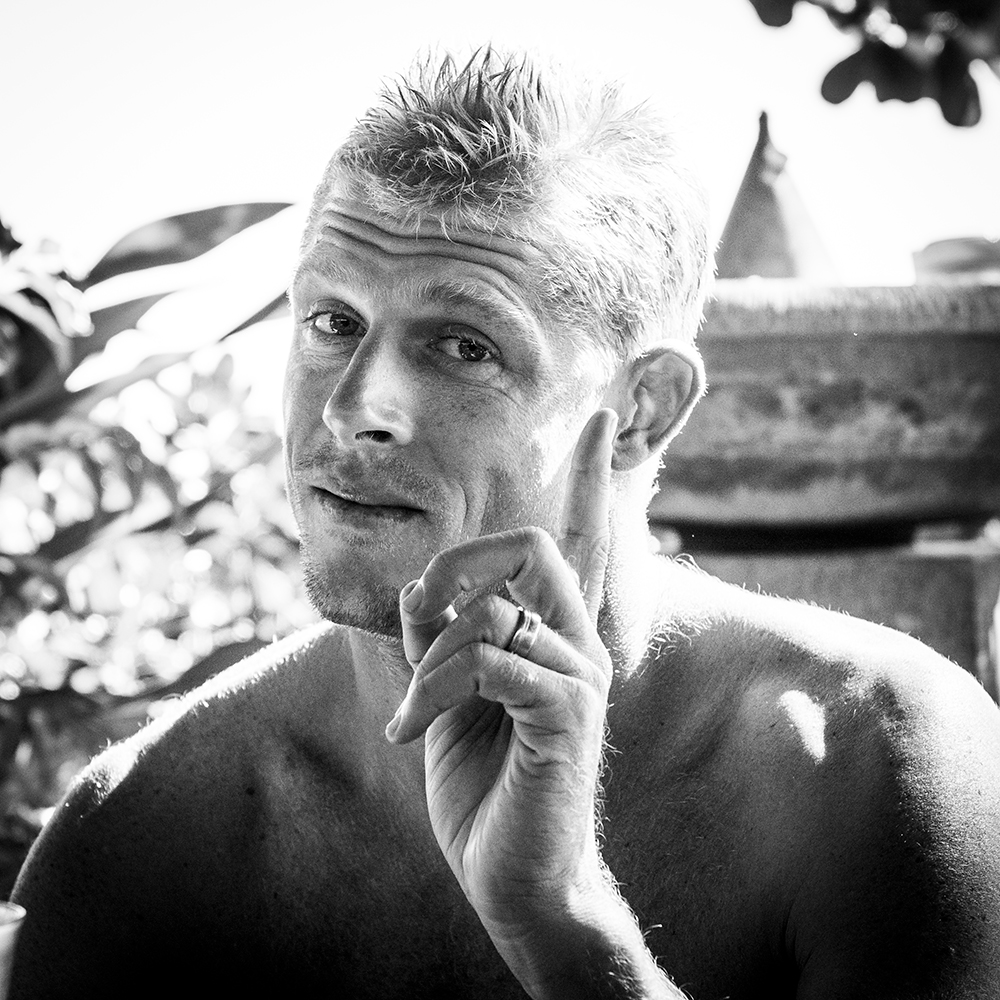
Julian Wilson had taken the first wave to open his account, while defending J-Bay champion Fanning waited for a set further up the line. As Wilson paddled back out the cameras focused on Fanning, who was paddling as a wave approached. Fanning suddenly seemed confused about which direction to paddle in. “You can see a little splash,” commentator Joey Turpel said in a strange monotone.
“Holy shit!” fellow commentator and former world champion Martin Potter cursed over the top of him. A glimpse of fins, Fanning thrashing, then lost from sight as a wave obstructed the cameras. These were some of the longest seconds imaginable, particularly if you knew either or both competitors. Then it was over. As Wilson paddled hard towards the shark to help his friend and rival, the shocked but unharmed Fanning managed to scramble to safety on a patrol boat. The event was called off, with both surfers sharing second place points and prize money. For surfing it was an historic and horrific first. For Mick Fanning, overjoyed to be alive, it was a life- and career-defining moment.
In the immediate aftermath Fanning appeared relaxed and cracked wise with the boat rescue crew before telling the WSL video cameras: “I was just sitting there. I was just about to start moving, and then I felt something grab, got stuck in my leg rope. I instantly just jumped away, and then it just kept coming at my board. I was kicking and screaming. I just saw fins. I didn’t see the teeth. I was waiting for the teeth to come at me as I was swimming. I punched it in the back.”
Fanning explained that he was pulled under by his leg rope, and when that broke he “started swimming and screaming. I can’t believe it. I’m just tripping… To walk away from that, I’m just so stoked.” Of course, he was in deep shock, which he soon began to realise: “I was on the water-safety boat chatting with everyone and laughing about the whole situation. At that point it was so surreal. But once I got on land and saw the reaction from everyone who had witnessed what went down, it hit me. The hugs I felt from some of my close friends brought out a different feeling. I realised then just how lucky I was.”
That year of 2015 turned out to be Mick Fanning’s ongoing nightmare, from which close friends despaired he would survive. It would take the mettle of a true champion to make it, but Mick had one great advantage: he’d been a battler since the beginning.
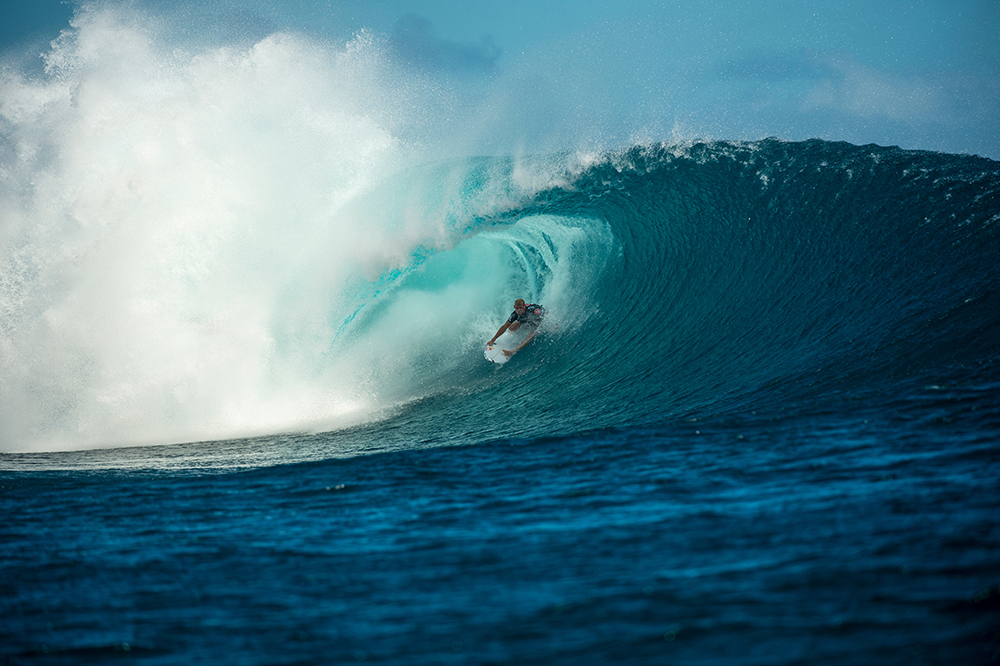
Born Michael Eugene Fanning to an Irish father and Australian mother in the outer western Sydney suburb of Penrith in 1981, the youngest child with three older brothers and a sister, Fanning’s first home was in Campbelltown, even further away from the coast. He grew up on various parts of the New South Wales north coast, including a short stint in Coffs Harbour living with his father John after his parents’ marriage broke up when he was aged just three. Thereafter the family of five kids of single mother and psychiatric nurse Liz followed her career to Ballina and finally to Tweed Heads, just south of the Queensland border. Wherever they lived Mick tagged along to the beach with his older brothers Sean and Ed and had his first surf at age five, but it wasn’t until the family settled at Tweed Heads when he was 12 that he started to ride a board in earnest.
As Mick noted a few years ago: “My three big brothers had started surfing and, as little annoying siblings tend to do, I followed them. My competitive nature really started to take hold when I hit double digits – soccer, running, school, cricket, rugby league – the game didn’t matter, I loved it all; but surfing was different. I got a buzz from surfing I couldn’t get from anything else.” Interviewed about his mother’s influence by a women’s magazine, Mick opened up for the first time about Liz:
“My mum is a kind-hearted person. She was strict with us five kids, but fair. She put our needs above her own, which was selfless… Dad always cared for my siblings and me, and was present in our lives, but Liz raised us as a single mum, which wasn’t easy. She figured if she had a house close to the beach, her four sons would go surfing and stay out of trouble. Mum drove an old Land Rover. My brothers and I would pile in the back with our boards and she would drive us to junior tournaments, go about her day, then pick us up. She’d watch if she could. To her, it didn’t matter if we won or lost. She just wanted us to be happy and have fun.”
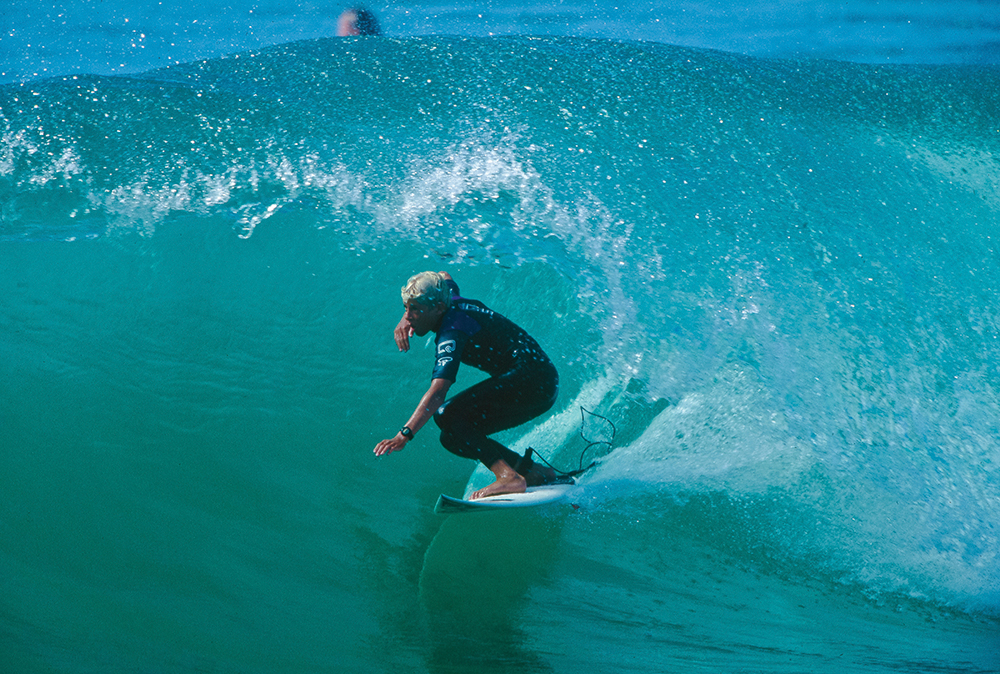
As a surfer Mick was a fast learner, scoring a third in the national juniors four years later then winning the Pro Junior at the age of 18 in 1999. Alongside his best mate at school and in surfing Joel Parkinson and Dean Morrison, the trio became known as the new ‘Coolie Kids’, a homage to the 1970s pioneer pros and Coolangatta residents Michael Peterson, Peter Townend and Rabbit Bartholomew. Like them, the Coolie Kids were fast tracked to the top through club contests at the Snapper Rocks Surfriders Club, but it was Parkinson and Morrison – particularly the smooth-as-silk Parko – who made a bigger impression in those early years, both winning a major pro event ahead of Mick.
Everyone who watched him surf the long line-up at Snapper Rocks that was becoming known as the ‘Superbank’ knew that the white-haired, athletic Mick was poised for success. However, first he had to get over a huge emotional hurdle. In 1998 older brother Sean, who was Mick’s inspiration and a talented, aspiring pro surfer himself, was killed in an horrific car accident along with another popular Coolangatta surfer. The deaths rocked the Gold Coast surfing community and completely devastated Mick. When he could function again, he told friends he was now absolutely committed to making it as a pro “for Sean”. Years later he told Men’s Health magazine:
“Sean and I had the same goals and it bound us; we dreamed of making the world tour together. He encouraged me and looked out for me. He was my hero. He was just 20 when he died. We were out at a party together but got split up. I walked home… Sean jumped in a car with friends. On the walk home the police picked me up and told me Sean was gone. I was burdened with the news and had to tell the family. I locked myself in my room and didn’t leave it for a week. When I finally got myself together my motivation to achieve my goals went into hyperdrive. I wanted to honour my brother by fulfilling our dream.”
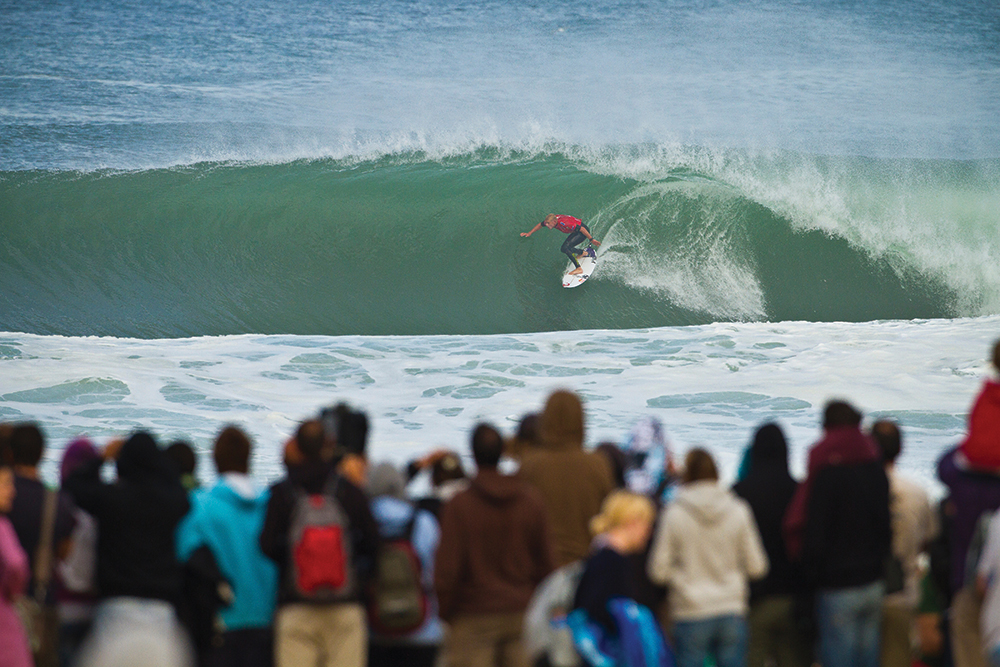
That was his mission when he was offered a wildcard into the Rip Curl Pro Bells Beach in 2001 by his new sponsor Rip Curl. Fanning was in devastating form though still only aged 19, revealing a flowing, fast and powerful attack to win the event from Byron Bay’s Danny Wills. Accepting the unique bell trophy for his first world tour event victory, he dedicated it to Sean then went on to win that year’s World Qualifying Series and earn a place on the World Championship Tour for 2002. Fanning won his first Billabong Pro Jeffreys Bay in 2002, finishing the year fifth in the world and being named rookie of the year by the Association of Surfing Professionals (ASP).
In Fanning’s rookie year his best mate Joel Parkinson finished second in the world on the ASP rankings and seemed destined for a world title, perhaps ahead of Mick, but Hawaii’s Andy Irons took his first title in 2002 and signalled the beginning of almost a decade of the greatest rivalry between two champions that the sport had ever seen – and neither of them were Australian.
With a record six world titles to his credit in the 1990s, Kelly Slater had retired from touring in 1999. In the new century he was back with renewed energy and just one ambition – to beat Andy Irons. Irons won three consecutive ASP world titles before Slater hit back, winning the next two years. In the meantime, Mick Fanning had to hang in and wait, battling bad luck and serious injury.
Fanning’s surfing was fast, exciting and at times even electrifying, earning him the nickname ‘White Lightning’. He had a competitor’s intelligence that enabled him to focus at the right times and put together winning heats and in Australia at least, the dogs were barking that he would soon be a world champion, but then fate intervened.
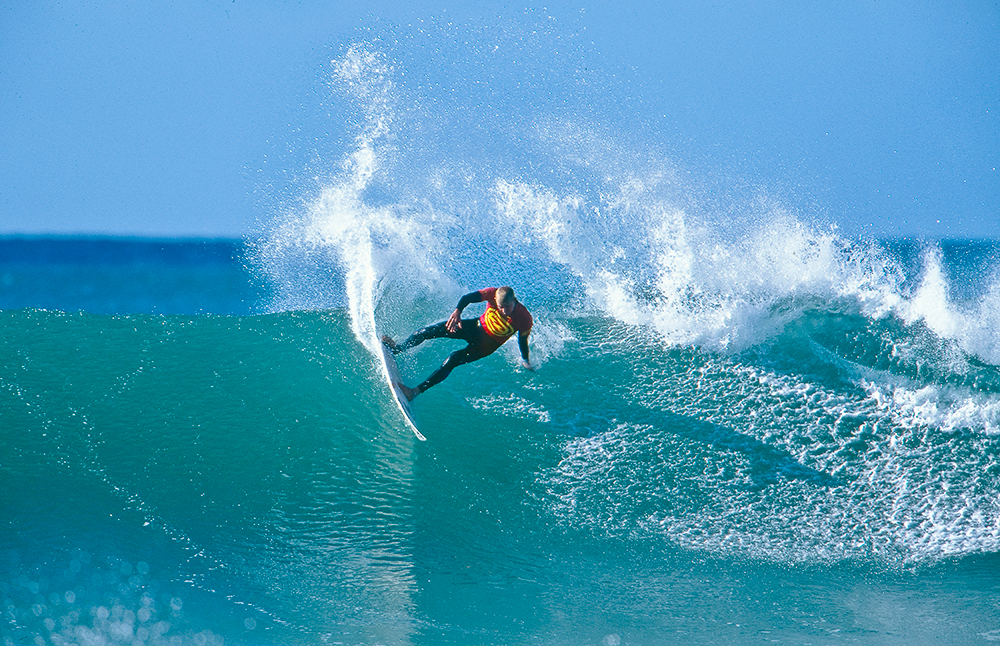
On a surfing boat trip in the North Sumatran islands in 2004, the champion in waiting floated a section on a head-high wave just as he’d done a million times but, as he told his biographer Tim Baker: “As I came down I tail-dropped, my back foot came off and I did the splits. Then the wave landed on me and pushed me further into the splits and almost through my board. My hamstring muscle ripped clean off my pelvic bone.” Fanning was in agony through two days of travel home, where the news was not good: he was out of the water for six months and faced a long journey back to fitness.
Rehabilitation was long and painful, but remarkably Fanning came back fully fit at the beginning of 2005 and took out the season opener, the Quiksilver Pro Gold Coast, at his home break of Snapper Rocks, then went on to win the Rip Curl Search Pro on Reunion Island to finish the year in third place and poised for a title. The only thorn in his side was Kelly Slater, almost 10 years his senior but in devastating form and racking up more and more victories. Fanning took out two more events in 2006, including his second title at J-Bay, but could not keep pace with Slater and finished third again.
Then came the real test of a champion: could he shrug off disappointment and refocus? Over the ups and downs of his early career Fanning had developed a reputation as a wild party boy, albeit one who could switch gears swiftly from binge drinking to serious event training. This split personality was alluded to in the title of his second video release, Mick, Myself and Eugene, but there were plenty of stories about Eugene’s behaviour doing the rounds.
As surf historian Matt Warshaw noted: “He’d become notorious for beer-fuelled antics at banquets and parties. At the 2005 Surfer Poll Awards [in California] he wandered onstage to heckle Kelly Slater during his acceptance speech. To win his first world title, Fanning cut back on his drinking, hired a trainer, put a new level of torque into his frontside off the top and discovered a monomaniacal level of focus.”
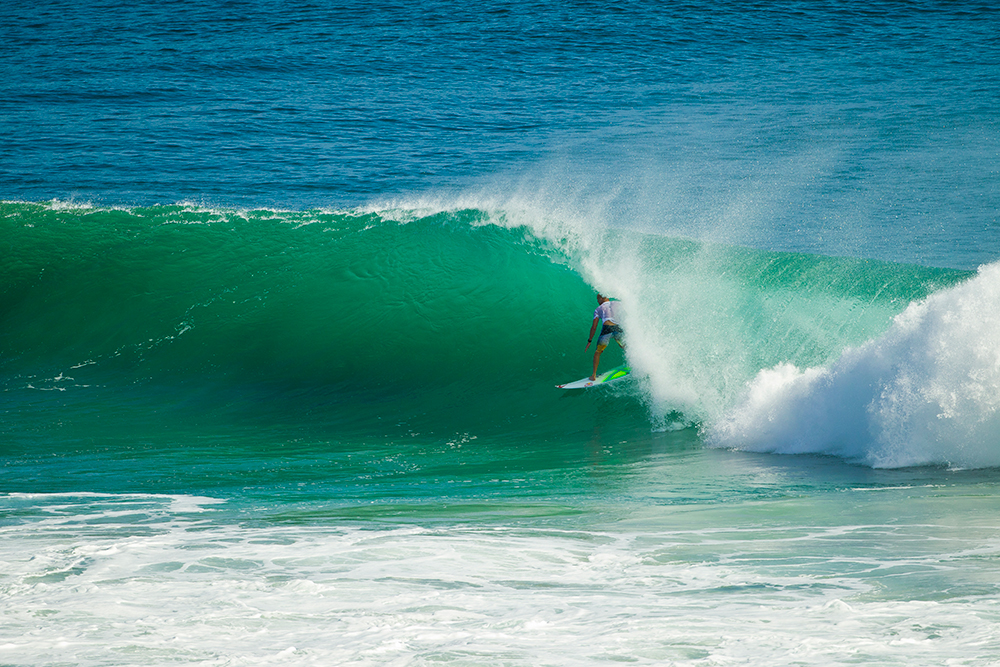
In 2007 Fanning won the Quiksilver Pro Gold Coast again, then the Quiksilver Pro France. He was ratings leader going into the Billabong Pro Mundaka, and as “He’d become notorious for beer-fuelled antics at banquets and parties.” I watched that event from the old stone steps above the picturesque break I realised I had never seen a more focused surfer before his heats, blocking out the world with his big headphones, pacing like a caged tiger and willing himself to win. He didn’t, but when he took the next event in Brazil the crown was his. In eight of 10 contests that year Fanning made the semis or better, winning three events. As he told Men’s Health:
“On the day I won my first world title in Brazil there was a dolphin out there in the line-up. It wasn’t part of a pod, it was just cruising around solo and kept popping up during my heats. I felt the presence of my brother, Sean. That day I became the first Australian to win the title since Mark Occhilupo eight years earlier, and the greatest of all time, Kelly Slater, handed me the title trophy. It was the best, and I got to dedicate it all to my brother.”
If Fanning took his foot off the accelerator a little in 2008 it was perhaps understandable. In 2004 he had met model Karissa Dalton and, after several years of sharing a house, they tied the knot in 2008. Seemingly settled and happy, Mick came out guns blazing at the start of the 2009 season with another world title in his sights, but he hadn’t taken into account the long-thwarted world title ambitions of best friend and rival Joel Parkinson, who dominated the first half of the season by winning at Kirra for the Quiksilver Pro and at Bells Beach and J-Bay.
Undaunted, Fanning fired back in the second half with consecutive victories at Trestles in California, at the Quiksilver Pro France and at the Rip Curl Search Pro in Portugal to take his second title, but it came at a price. As Fanning said later: “I locked horns with my best mate in an intense title race. I won the title but it took its toll on me. Joel and I didn’t exactly hang too thick that year. I was winning but felt like my relationship and friendships were suffering.”
Fanning’s 2013 title was a model of consistency, as Matt Warshaw observed: “He finished in the top five of nine of the year’s 10 events, including a win at the Quiksilver Pro France. Heading into the final event of the year, the Pipe Masters, 11-time world champ Kelly Slater was the only surfer with a chance of catching Fanning. Needing a semi-final berth to claim the title, Fanning squeaked past Yadin Nicol in the dying seconds of their quarterfinal clash, clinching his third world championship, and becoming the fifth male surfer to win at least three titles.”
This was not the first or the last time a surfer won a world title through consistent high placings rather than wins, but Warshaw was one of several commentators who took the gloss off Fanning’s achievement: “Slater won the Masters in devastating form, and because he took out three events total for the year, to Fanning’s one, many observers felt that he was in fact the year’s standout performer… Plan the year so that you have at least a small margin of error at the end. Sound a bit clinical? Exactly. That’s Fanning all over. He marched through the season, event to event, with the grim certainty of a man who knows full well that Pipe is not where you want to make a world title stand.”
Fanning saw it in a different light, later telling an interviewer: “The third world title was more fun. I could flick the switch and get into competitive mode but could now zone out and enjoy the world around me. Competition became a game and it started a solid run for me. I was in contention again for a few years and 2015 felt like another world title year. At J-Bay I felt unbeatable, and going into the second half of the year I eyed this as my event to charge ahead on the ratings. That’s when old mate in the grey suit popped up and in a matter of seconds altered the course of my life and gave me perspective I’d never had before. Competition points didn’t mean much in that moment. Living was a priority.”

The brush with death at J-Bay was actually the second of a trio of tragic events that befell Mick Fanning in 2015. The first was his seven-year marriage to Karissa was falling apart; the couple divorced in 2016. The third was that at the end of the year older brother Peter, 43, died of an enlarged heart. It was the second brother Mick had lost after Sean in 1998.
After J-Bay Mick took a break from the tour, but he returned in time to be a contender for another world title. He recalled: “I went into the final event, the Pipe Masters, leading the world title race. Everything felt right… a fourth title was right there. On the day it was all set to go down at Pipe I was woken early, too early, by a knock on my door. My beautiful mum standing there… tears in her eyes and clearly hurting. She told me Pete had passed away. That morning friends were comforting me and telling me I didn’t have to go out if I wasn’t up to it. I knew what Pete would want. To win the world title I had to place ahead of Brazil’s Adriano de Souza. I was up for the challenge but had to overcome the two greatest Pipe surfers of all time in Kelly Slater and John John Florence. The waves were firing and we all had excellent rides. I won the heat but lost the title to Adriano. Losing the title didn’t hurt. At the end of the day I only had Pete in my thoughts.”
Fanning later told an interviewer: “That was the one that just floored me. I was like, what else can be taken in a year?” At the end of 2015 he hit rock bottom, explaining:”‘I felt like I had nothing to give myself, or to the people around me, or to family or friends. I just didn’t see a way of coming back. I’ve never felt that empty before. I just lay in bed, did nothing, wouldn’t leave the house.”
Fanning took time out and travelled the world with the Rip Curl Search team on a wave hunt that also became a soul-searching mission. By the start of the 2016 season he still didn’t feel ready to compete but knew he had a date with destiny at Jeffreys Bay. The return to the scene of the previous year’s near tragedy was profitable: he beat Hawaii’s John John Florence in the final and got the shark off his back. Still undecided about his future as a competitor, Mick was back in 2017 but the fire was gone. He said: “I saw glimpses of the future performances of Florence and Filipe Toledo. I saw the kind of hunger and determination it takes to get yourself into title contention with Gabriel Medina. I don’t have that drive for competition anymore.”
At the Rip Curl Pro at Bells Beach in 2018 Fanning announced his immediate retirement, and after he went public (in 2017) about his relationship with speech therapist Breeana Randall, the couple had their first child, son Xander, in 2020 and announced their engagement. After the shark attack at Jeffreys Bay, Fanning became a student of shark behaviour and later helped make the documentary Save This Shark with shark conservationist Cristina Zenato. He has remained active in the anti-culling movement and other conservation causes.
As successful in business as he was in the waves, Fanning has built up a sizeable property portfolio and in 2016 co-founded the Gold Coast-based Balter craft brewing company with Joel Parkinson and other surfing partners, three years later selling it to Carlton and United Breweries for around $200 million. In early 2022 Fanning and Parkinson took time out from surfing and business to activate their jet skis in the Northern Rivers area in New South Wales to rescue people from their homes in record level flooding.
By PHIL JARRATT
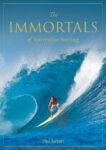
ABOUT THE AUTHOR
PHIL JARRATT is a journalist, author, publisher and filmmaker with more than 50 years’ experience in Australian and international media. He is a former editor of Tracks, associate editor of Surfer and editor/publisher of Australian Surfers Journal. He’s also worked inside the executive ranks of two of the world’s biggest surf brands – Rip Curl and Quiksilver – as a senior marketing executive for 10 years.
This is an edited extract from THE IMMORTALS OF AUSTRALIAN SURFING by Phil Jarratt (Gelding Street Press, $39.99rrp) available at Big W and all good bookstores
For the full article grab the November 2023 issue of MAXIM Australia from newsagents and convenience locations. Subscribe here.




